|
|
GeCube Radeon X800 XL Review
[Abstract]
Final thoughtsAdvertismentATI and its partners have tried to cleverly position their RADEON X800 XL 256MB cards at a price point that's clearly below that of most GeForce 6800 GT's. Our perform...
[Content] PCDigitalMobileGame
Card appearanceAdvertisment


The first aspect you notice about GeCube's AGP-equipped X800 XL 256MB video card is the size of the card. It's comfortably wider than, say, a RADEON X800 XT PCI-Express card. Just this fact will make for a difficult fit inside a number of small form-factor PCs. What's also interesting is how GeCube goes about the business of cooling the R430 core, running at 400MHz on this particular model.
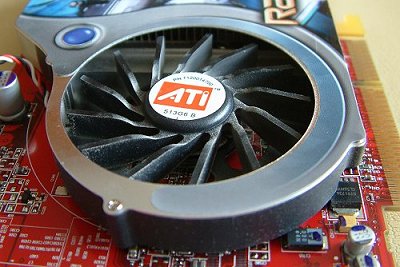
Look through the cooler's fins and you'll notice that there's no VPU in sight. The fan sits to the left of the core and blows air across the finned heatsink and out to the right. Think about it for a second or two. Having a fan directly on top of a core can cause a large deadspot, where no active cooling is taking place. Here, as you can see, the array of fins in the distance are cooled at all times. One undesirable side-effect of this kind of cooling is in exhausting warm-ish air from the card directly into a case, though.

Here you can just about make out the core underneath the aluminium heatsink that has a copper insert. It's a shame that the cooler employed here isn't the Uni-Wise edition, replete with heatpipe-driven cooling and variable-speed fan. It's specced on the native PCI-Express version of this card. The fan, when in full-blown 3D mode, isn't the quietest around, and it's definitely a notch or two louder than a reference X800 XL fan.
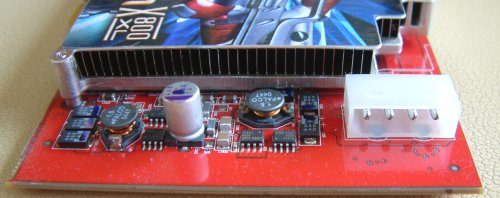
Here are the fins and heatsink when viewed from the other side. Since the card is AGP and the slot doesn't carry as much juice as a PCI-Express x16's, there's an additional 4-pin molex power connector. The width of the card gives rise to large portions of unused PCB space. I can't help feeling that GeCube could have engineered the PCB to match other X800-based cards'.

Nothing out of the ordinary on the backplate, although the S-Video socket can be used for both video-in and video-out.
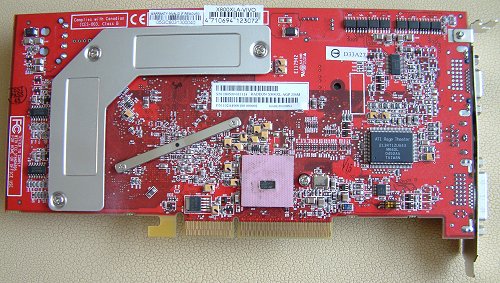
I alluded to the width of the card at the very top of this page. Part of the reason is due to the AGP conduit. R430-derived cards are designed for PCIe running, so, much like NVIDIA with its HSI bridge, ATI also uses a bridge for the conversion between PCIe and AGP formats. Again, note just how much unused PCB space is visible on the back of the card.
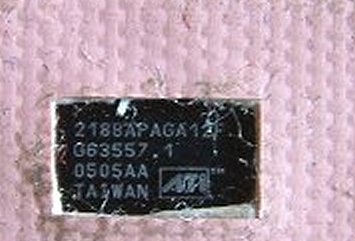
The Rialto bridge is ATI's take on converting between PCIe and AGP. Unlike NVIDIA's high-end bridged cards, ATI prefers to have a discrete ASIC. It got rather toasty when under load, hot enough to make yours truly pull his finger away immediately. However, there were no stability problems to report during a weekend of testing.
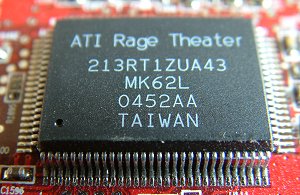
The presence of ATI's venerable Rage Theater ASIC gives the GeCube X800XLA-VIVO basic video-in/video-out functionality.
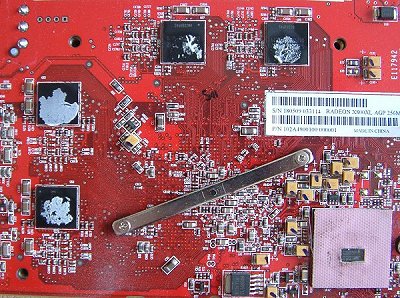
Prising off the rear heatsink reveals 4 256MBit Samsung GDDR3 DRAM devices rated at 2ns. That's 1GHz nominal speed; perfect for card's 980MHz default memory clock. Of course, as it's an R430-derived design, a 256-bit memory interface offers up to 31.36GB/s of juicy bandwidth.
|
|
|

 ATI Unveils Mobility RADEON X800 XT for DTR Laptops (2005-06-08)
ATI Unveils Mobility RADEON X800 XT for DTR Laptops (2005-06-08) Rockdirect to Ship Mobility Radeon X800XT Powered Laptop (2005-06-08)
Rockdirect to Ship Mobility Radeon X800XT Powered Laptop (2005-06-08) ATI's Mobility(tm) Radeon?X800 XT Unleashes the Ultimate Mobile Gaming Experi... (2005-06-07)
ATI's Mobility(tm) Radeon?X800 XT Unleashes the Ultimate Mobile Gaming Experi... (2005-06-07) MSI's RADEON X800 XL Can Function Using PCI Express and AGP Busses (2005-06-02)
MSI's RADEON X800 XL Can Function Using PCI Express and AGP Busses (2005-06-02) ATI Radeon X850 XT Platinum Edition Review (2005-05-26)
ATI Radeon X850 XT Platinum Edition Review (2005-05-26) Sapphire Radeon X850 XT Platinum Edition AGP Review (2005-05-21)
Sapphire Radeon X850 XT Platinum Edition AGP Review (2005-05-21) ATI X800 XL Shootout (2005-06-11)
ATI X800 XL Shootout (2005-06-11) Sapphire Hybrid Radeon X800 XL 512MB Review (2005-05-20)
Sapphire Hybrid Radeon X800 XL 512MB Review (2005-05-20) GECUBE RADEON X700 Professional 512MB & SilenCool (2005-05-12)
GECUBE RADEON X700 Professional 512MB & SilenCool (2005-05-12) Nvidia 6800 Ultra vs GeCube X850XT Review (2005-04-22)
Nvidia 6800 Ultra vs GeCube X850XT Review (2005-04-22) GeCube Radeon X850 XT Uni-Wise Review (2005-03-31)
GeCube Radeon X850 XT Uni-Wise Review (2005-03-31) GeCube's Radeon X850 XT Uniwise (2005-03-30)
GeCube's Radeon X850 XT Uniwise (2005-03-30) GECUBE Launch RADEON X850XT AGP and RADEON X800XL AGP Series (2005-03-03)
GECUBE Launch RADEON X850XT AGP and RADEON X800XL AGP Series (2005-03-03) GeCube SilenCool X700 PRO 256MB (2005-02-02)
GeCube SilenCool X700 PRO 256MB (2005-02-02) 









